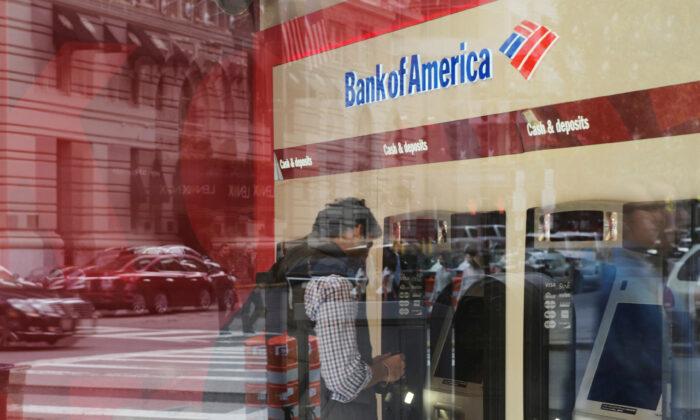American banks are chasing consumers to open new accounts, after a massive exodus of deposits over the past year led to a drain in capital.
The problem began at the start of the COVID-19 pandemic, when American corporations flooded banks with excess cash deposits, forcing their lenders to turn them away.
The Federal Reserve lowered interest rates to near zero and launched bond-buying programs in early 2020, to enable customers to raise funds at low cost and stimulate the economy.
Instead of spending the money to invest or take out loans, many companies stored their excess cash in the banks.
Rapidly accumulating deposits began to add immense pressure on financial institutions to raise more revenue, as they were required to hold a capital equivalent of at least 3 percent of all assets, but this was not financially sustainable in the long term.
Rising Interest Rates Reverses Banking Trend
The fed funds rate is the benchmark used by banks and government backed lenders to exchange cash reserves stored at the central bank.However, if liquidity among lenders substantially decreases, the fed borrowing rate typically surges, putting stress on financial institutions and companies’ ability to fund their operations.
Lending activity started to surge again in the first half of 2022, after the Fed hawkishly raised interest rates at the fastest pace in almost 40 years, to fight out-of-control inflation.
The borrowing rate is currently at about 0.15 percentage points above the Fed’s current target range of between 4.5 and 4.75 percent and more than 0.3 points from the median, the effective fed funds rate.
At first, the Fed’s bearish rate policy had generally helped banks by letting them charge more on their loans, as the decline in new deposits had little effect.
After a while, the amount of deposit outflows from commercial clients rose, owing to consecutive monthly hikes in the Fed’s borrowing rate.
This led to higher client deposit fees, increasing the pace of withdrawals at the banks.
Customers were pulling cash from savings accounts and placing it into higher-yielding products like money-market funds.

Clients were actually encouraged by the banks to lower deposit rates, but are now competing with them for business.
Smaller Banks Borrowing From Fed to Stay Afloat
Some lenders have been scrambling to borrow funds via fed funds trades to improve their liquidity and make regulatory requirements.Most fed funds trades involve Federal Home Loan Banks (FHLBs), which were set up to support mortgage lending and are able to lend cash overnight to a commercial bank.
Although FHLBs are not allowed to earn interest by depositing funds at the Fed in the same way as banks, they are able to lend their excess cash to financial institutions, without requiring securities to back a loan.
Many community banks are struggling to meet the higher rates offered by Treasuries and money-market funds that have cut into their client base, are increasingly taking FHLB advances, longer-term borrowings backed by high-quality securities.
With more banks demanding longer-term loans, FHLBs have invested more of their funds into daily products, rather than leaving them in harder-to-access securities, Mark Cabana, a chief strategist at Bank of America told The Wall Street Journal.
Meanwhile, increasing competition among community banks has caused a spike in fed funds transactions costs, according to the New York Fed.
“Banks will tell you they don’t want to compete for funding,” said Cabana, “but the Fed wants to tighten financial conditions, and this is one way to do that.”
Bank Deposits Are Shrinking
Deposits at U.S. banks plummeted at the fastest rate on record in the second and third quarters of 2022, according to the latest data from the Federal Deposit Insurance Corporation going back to 1984.Account balances fell by $206 billion to $19.357 trillion in the third quarter, after a $370 billion loss in the second quarter.
This was the first time since 2010 that banks had two consecutive quarters of declines.
Almost 20 percent of U.S. banks offered to pay savings rates of 2 percent or more in January, up from 15 percent in December and from just 1 percent from a year ago, according to Curinos, a financial services consulting firm.
“Some of those banks may need to price up more than they have because customers are looking up, and there are 4 percent deposit options available to them,” said Stockton.





